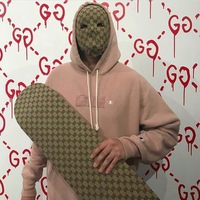
Find the synonyms. 1.dissectors- 2.the item used to sew the skin- 3.non-toothed- 4.traumatic-
5.“Debakey’s”- 6. a pair of scissors with two arms 7.which meet to press together instead of cut - 8.a surgical equipment used to block or occlude blood vessels & luminal tissues - 9.Long, slender and uncomplicated instrument used for exploring or examining anatomy – 10. an assistant`s instrument – it holds itself in place after it has been positioned and applied- Manipulation As you hold and interact with objects in your hands, a surgeon may use the following instruments to interact, dissect and handle tissues or needles within the surgical field (the bit being operated on). Dissecting forceps Also known as dissectors, pick-ups, grabbers and thumb forceps. This is one of the instruments you are most likely to be familiar with. Dissecting forceps look like a large pair of tweezers and generally vary in size and shape .Forceps are used to grasp and manipulate tissue as well as equipment such as needles or swabs. You would use them as you would use your finger and thumb. Importantly, the tip of the forceps can be non-toothed (atraumatic) or toothed (traumatic). The most commonly used non-toothed forceps are given the eponymous name ‘Debakey’s’. Hinged forceps Resembling a pair of scissors but instead of two blade-like parts, two arms which meet to press together instead of cut.The size and shape of the arms, as well as the shape of the surfaces which meet vary dependent upon the type of hinged-forceps. This design is common amongst many instruments, for example, needle holders (for suturing) and artery forceps (for vessel ligation). Clamps Tissue clamps have a similar design to hinged-forceps and are used to block or occlude blood vessels or other luminal tissues (просвітні тканини)(such as bowel). Depending on their use, clamps can be atraumatic (e.g. for use on bowel), designed to crush tissue, or have features specific to them so they don’t slip (e.g. for vessel occlusion). Probes Long, slender and uncomplicated instruments, probes also vary in size and the functional ends. Generally, probes are used for exploring or examining anatomy as well as fistulae or sinus tracts. Retraction To improve the view of the surgical field by tissue or organs out of the way the following instruments may be used. Handheld retractors Simple, versatile instruments (універсальні інструменти) which need to be held and manipulated by an assistant. They have three main parts: a handle which goes in the assistant’s hand, a blade which goes into the patient and a shaft in-between. The blades come in many different shapes, including hooks, teeth, right angles and curves. Self-retaining retractors Varying significantly in design from simple hinged ratchet’s (навісні затискачі) to complex operating-table-mounted frames, self-retaining retractors hold themselves in place after they have been positioned and applied. This is very useful, as it frees up the assistant’s hands to do other more exciting things, reduces muscle fatigue and allows the continuous provision of safe and stable levels of traction during longer procedures. The so-called ‘metallic SHO’ 0
0
 0
0
Ответы на вопрос
 Внимание! Ответы на вопросы дают живые люди. Они могут содержать ошибочную информацию, заблуждения, а также ответы могут быть сгенерированы нейросетями. Будьте внимательны. Если вы уверены, что ответ неверный, нажмите кнопку "Пожаловаться" под ответом.
Внимание! Ответы на вопросы дают живые люди. Они могут содержать ошибочную информацию, заблуждения, а также ответы могут быть сгенерированы нейросетями. Будьте внимательны. Если вы уверены, что ответ неверный, нажмите кнопку "Пожаловаться" под ответом.

Відповідь:
The above text describes various surgical instruments used in operating procedures. These include:
Dissecting forceps (aka dissectors, pick-ups, grabbers and thumb forceps) - a pair of large tweezers used to grasp and manipulate tissue or equipment.
Hinged forceps - a pair of scissors-like instruments used to press together instead of cut.
Clamps - instruments similar to hinged forceps used to occlude blood vessels or luminal tissues.
Probes - long, slender instruments used for exploring or examining anatomy.
Handheld retractors - simple instruments held by an assistant to retract tissue and improve view of the surgical field.
Self-retaining retractors - instruments that hold themselves in place after positioning to provide stable levels of traction during longer procedures.
These instruments are essential for surgeons to interact, dissect and handle tissues within the surgical field.
Пояснення:
 0
0
 0
0

- dissectors: pick-ups, grabbers, thumb forceps
- the item used to sew the skin: suture needle, surgical needle
- non-toothed: atraumatic
- traumatic: toothed
- "Debakey's": Debakey forceps
- a pair of scissors with two arms that meet to press together instead of cut: hinged forceps
- a surgical equipment used to block or occlude blood vessels & luminal tissues: clamps
- Long, slender and uncomplicated instrument used for exploring or examining anatomy: probes
- an assistant's instrument that holds itself in place after it has been positioned and applied: self-retaining retractors
 0
0
 0
0
Похожие вопросы
Топ вопросов за вчера в категории Английский язык
Последние заданные вопросы в категории Английский язык
-
Математика
-
Литература
-
Алгебра
-
Русский язык
-
Геометрия
-
Английский язык
-
Химия
-
Физика
-
Биология
-
Другие предметы
-
История
-
Обществознание
-
Окружающий мир
-
География
-
Українська мова
-
Информатика
-
Українська література
-
Қазақ тiлi
-
Экономика
-
Музыка
-
Право
-
Беларуская мова
-
Французский язык
-
Немецкий язык
-
МХК
-
ОБЖ
-
Психология
-
Физкультура и спорт
-
Астрономия
-
Кыргыз тили
-
Оʻzbek tili






















